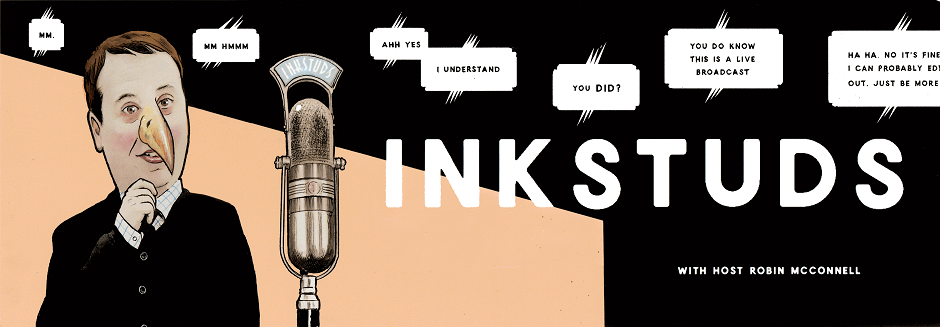The Papercutter anthology is one comic I get really excited about. When a new one appears on the shelf at the comic book store, I know that I am going to buy it no matter who the artists. Past issues have showcased new work from such indie excellenteers as Sarah Oleksyk (issue 4), Aaron Renier (issue 1), Alec Longstreth (issue 6) and Liz Prince (issues 2 and 5) and their gorgeous covers never fail to catch my eye. For the comic buyer on a budget, Papercutters are a great way to get exposed to artists before dropping dollars on a million minis. Greg Means’ excellent editing becomes more and more apparent as the series goes on. When is Tugboat Press going to do a giant anthology?
going to do a giant anthology?
Nate Beaty (of Brainfag) did the interior covers as usual, this time with interior and exterior architectural views.
The first and longest story is Corrine Mucha’s autobiographical “Growing Up Haunted.†GUH revisits the story touched in an earlier mini of the witches that “just kind showed up†and lived in a castle behind her closet. Corrine uses the witches as a jumping off point to discuss fear, memory and growing up. Her crosshatched, Lynda Barry-esque style is perfect for telling this story of bepatterned witches, secret rooms and shattered nerves. The story weaves through time and Mucha uses the space differently for each thread of the story—a subtle and sophisticated move. Upon rereading, it’s Mucha’s comic timing chops that really shine. The interplay between her voiceover text and the depictions of moments from the past beneath and the dialogue she gives to the witches is so charming and funny that it seems effortless.
“High School†by Elijah Brubaker is an origin story for the downtrodden skeleton and rebel-without-a-cause bunny (Ray and Hubert, respectively) characters that appeared in an earlier Papercutter. The story is short and superficial—basically the two meet in career development class, personalities fully formed. I didn’t really like the characters the first time I read about them and “High School†added nothing to my opinion of this story line. The contrast in appearance between Ray and Hubert’s simplicity and the more dimensional “humans†is interesting, but ultimately doesn’t go anywhere. Apparently the next two issues will have more Ray and Hubert stories so perhaps that element will develop in the later installments.
Jeremy Tinder’s “Pete at Night†sets up the tale of a geeky, bar-going writer with your typical thwarted desires. His frustration sends him out into the night and into the webbed hand of destiny. As much as I ended up liking the resolution of this short story, I couldn’t help but feel that Tinder wanted his writer character to end up in a good place and decided to throw in a surreal element to

